9 巻, 4 号
選択された号の論文の8件中1~8を表示しています
- |<
- <
- 1
- >
- >|
-
1964 年 9 巻 4 号 p. 110-114
発行日: 1964/03/20
公開日: 2008/05/15
PDF形式でダウンロード (665K) -
1964 年 9 巻 4 号 p. 115-116
発行日: 1964/03/20
公開日: 2008/05/15
PDF形式でダウンロード (266K) -
1964 年 9 巻 4 号 p. 117-119
発行日: 1964/03/20
公開日: 2008/05/15
PDF形式でダウンロード (297K) -
1964 年 9 巻 4 号 p. 120-122
発行日: 1964/03/20
公開日: 2008/05/15
PDF形式でダウンロード (315K) -
1964 年 9 巻 4 号 p. 123-126
発行日: 1964/03/20
公開日: 2008/05/15
PDF形式でダウンロード (452K) -
1964 年 9 巻 4 号 p. 127-132
発行日: 1964/03/20
公開日: 2008/05/15
PDF形式でダウンロード (4879K) -
1964 年 9 巻 4 号 p. 133-138
発行日: 1964/03/20
公開日: 2008/05/15
PDF形式でダウンロード (846K) -
1964 年 9 巻 4 号 p. 139-142
発行日: 1964/03/20
公開日: 2008/05/15
PDF形式でダウンロード (551K)
- |<
- <
- 1
- >
- >|
